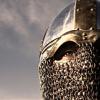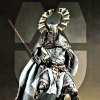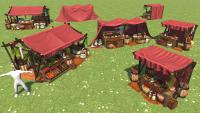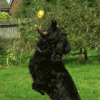Leaderboard
Popular Content
Showing content with the highest reputation on 2014-02-08 in all areas
-
Mega Mania: You have convinced me. I knew full-well that the Ptolemies recruited Cretan Archers for their armies, but I was wanting to add more ethnic flair to their unit roster by including the Nubian Archers. I can probably just keep the Nubian archers in Atlas and give the Ptolemies the Cretan Archer. I don't think the Cretan Archer should be a Civic Center unit, so maybe we can put the Cretan Archer into the Mercenary Camp and resurrect the Libyan "Thureophoros" as a heavy skirmisher for the Civic Center.3 points
-
Yeah, for now SVN (and Trac, and a few other small things) are down. They are on a server that Philip (Ykkrosh) is managing, and unfortunately we haven't been able to contact him yet. We'll keep trying though.2 points
-
Hi, I'm going to share my workflow for texture creation within blender. I developed this technique while working in WFG and the need to make custom textures by myself in a reasonable timeframe. (This is a How-to post not a tutorial ) This may be helpful if you're a better modeler than a texture painter like me. The process is like this: I made a .blend file which is basically a camera in orthographic view mode (without perspective) that is pointing down, a plane which is exactly the same size as the camera and a sun lamp to get some shadows in the texture. With this setup, when you make a render, the square plane will fill all the render image. Once you have modeled whatever you want to be the texture, you can use the plane that fills the whole camera view to bake normals, ambient occlusion, displacements... whatever. You need to have some basic knowledge in blender to know how to apply textures, modifiers, etc.. so you create the scene textured, and you render to get the texture that will be used (preferably for 0AD lol) In this video I show the final scene of how I made a test texture for an elephant howdah. The bricks are just cubes that have two subsurf modifiers (that makes them smooth), displacement modifiers (that makes them bumpy) a desaturated leather texture that makes them grey and a rusty metal texture that makes them dirty. The wood is a single plane with a wood texture, and little details are modeled with a metal material. After rendering the scene and check the texture, I use the plane to bake the normals selecting all the geometry I want to bake, select the plane last, create a new image to bake the normals, and baking them with "selection to active" checked. Since the plane has the same ratio as the camera, the normal texture matches the rendered texture. Here's some links to pages with licenses compatible with 0 A.D: http://www.texturemate.com http://agf81.deviantart.com/gallery/ http://opengameart.org/users/yughues I also used this technique for creating textures for units. The trick for units is using a background image with an existing unit texture, and modelling only the "new parts" placing them following the background image as reference. Then make the render with transparent background, and use GIMP or photoshop to add the resulting rendered texture in top of the base texture. Here's an example of the blendfile I used to create Ashoka's texture. I used Cycles renderer instead of blender internal because it works better for metallic reflections (but is harder to make a good light setup). Here's the blendfile ready to model the contents of the texture and render it. Blender texture creator.zip2 points
-
In short, the Ptolemaic army consisted of military colonists (sons of the Alexander veterans), Greek citizen under military conscription laws, and Greek mercenaries (Greek in the from Macedon to Anatolia meaning).2 points
-
I'm all for reverting that particular change. I've got an idea for a change in the structure of that, some sort of custom tree.2 points
-
Awesome looking map I bet it would help to be able to brush clumps of trees and whatnot, instead of placing them individually? Maybe I will find inspiration to reapproach the patch I was working on for that...2 points
-
You should read this: iii. The Army and Navy78 The native military caste, whom the Greeks called machimoi, still, as we have seen, existed as a distinct body, when Ptolemy set up his rule in Egypt. It is still doubtful to what extent native Egyptian soldiers were used in the Ptolemaic armies before Philopator. On the one hand, Polybius speaks as if the arming of Egyptians as combatants by Philopator in 217 was a momentous innovation; on the other hand, we have the statement of Diodorus that at the battle of Gaza (312), the army of Ptolemy included "a large body of Egyptians, some employed in the transport service, and others armed and serviceable for fighting." It may be, of course, that Ptolemy Soter had at first — or in the special emergency of 312 — used native troops, but afterwards given up the experiment, so that a century later it seemed an absolute departure from Ptolemaic tradition when Philopator put native soldiers in the field. Or the innovation may have consisted in natives being then for the first time given Macedonian armour and organized as a regular phalanx, whereas before they had been only lightly armed, perhaps in the ineffective old Egyptian way, and used for subordinate operations, scouting, etc. p166Lesquier's theory is that native machimoi were employed as combatants from Ptolemy I onwards, and that the innovation of Philopator consisted in his now arming Egyptians indiscriminately, not machimoi only. But this theory hardly fits in with the account of Polybius. In any case, even in the earlier days of the dynasty, machimoi were employed as policemen, and apparently as marines on board the war-fleet.79 Of the native troops we have a few sporadic notices in documents belonging to the later days of the dynasty. They were organized in corps called laarchiai, each under a commander called a laarchēs.80 (The Greek word for "peoples," laoi, was ordinarily used to denote the native population.) The machimoi, who are found as military allotment-holders in the Fayûm under Euergetes II, have native names.81 If Lesquier is right, the term machimoi had come in the last century B.C. to change its meaning. Instead of denoting a native military caste, it now meant all those soldiers whose allotments were, like the allotments of the irrigate machimoi, of 30 aruras or under — including even Greek machimoi.82 This was one sign of that process which, under the later Ptolemies, seemed to be going some day to fuse Greeks and natives into one Egyptian people — had the process not been checked by Rome. The armies with which the first Ptolemy fought against rival chiefs consisted mainly, as we have seen, of Macedonian troops got together from the soldiery which had been far-flung, since Alexander, over the Nearer East. A large number of these he settled, as military colonists, upon the soil of Egypt, and the process of military colonization extended further under Ptolemy II and Ptolemy III. Even after Raphia, the strength of a Ptolemaic army was still in its European troops. We must distinguish between the regular and the mercenary troops. The regular army, as a whole, was always nominally "Macedonian," but it came, as a matter of fact, to be composed of many elements beside the Macedonian. Some of it was recruited from among the Graeco-Macedonian citizens of Alexandria or Ptolemais. The great majority of regular p167soldiers, other than those of Macedonian blood, were Greeks or men of the Balkan hill-country. The Thracians were seemingly the largest element after the Macedonians,83 and, amongst the Greeks, the Cretans. There was a small proportion of Asiatics, including Jews.84 The cavalry had rank above the infantry, as may be seen by the fact that cavalry soldiers had larger allotments of land. A cavalry corps (hipparchia) is sometimes described by a number — the Second, Third, Fourth, etc. — sometimes by a special nationality — "the hipparchy of the Mysians," "the hipparchy of the Thracians," and so on. As early as the beginning of the reign of Philopator the hipparchies with racial names had come to include soldiers of all races indiscriminately,85 by they may have retained the armour and manner of fighting characteristic of the race from which they had originallyº been recruited. The regular infantry (pezoi, "foot-soldiers"), armed in the Macedonian way with the long pike (sarissa), constituted the heavy phalanx in a Ptolemaic line of battle. (At Raphia thephalanx numbers 20,000 men.) It was organized in chiliarchies, denoted by numbers. The Greek word for "officer" (hēgēmōn) came to be specially used of infantry officers in contrast with cavalry commanders, hipparchoi. One of the problems of papyrology is what the words ep' andrōn ("over men"), which sometimes follow the title hipparch or hegemon, mean. The prevalent opinion to‑day is that it means "on active service."86 The generals who held the supreme commands in the Ptolemaic army were often soldiers of fortune from the Greek lands overseas — not condottieri exactly in this case, because they command the king's troops, not bands they had levied themselves and brought with them. In 218 the men who take the chief part in reorganizing the Ptolemaic army are Greeks from the old Greek lands — a Magnesian, a Boeotian, an Achaean, an Argive, a Thessalian, two Cretans; p168and in the next reign we find as chief of the army the Aetolian Scopas, who had taken a leading part in his own country before he came to Egypt. Beside their regular army, formed of men settled in Egypt (Macedonians, Greeks, etc.), and of native troops, the Ptolemies used mercenary soldiers on a large scale. The mercenaries consisted of troops recruited by some condottiere at one of the soldier-markets of the Greek world — Taenarum in the Peloponnesus, or Aspendus in Asia Minor — as a speculation on his own account; having formed his band, he would take service with it under any king or city who might offer him the most profitable terms. The wealth of the house of Ptolemy made it possible to hire soldiers of this kind from oversea in large numbers. For certain kinds of troops, expert in the use of a particular arm, required generally in the warfare of those days, the Ptolemies had regularly to resort to mercenary corps, recruited, in the first instance at any rate, from the peoples after which they were called — Cretan bowmen, Thracians with their large shields and straight double-edged swords (rhomphaiai), Gauls, tall fair-haired men of the North, with long narrow shields and swords of an extraordinary length, dreaded more than any other people as fighters, but liable to be a danger to their employer no less than to his enemies. At Raphia, Ptolemy IV has 10,000 mercenaries (horse and foot), of whom 3000 are Cretan and 6000 Thracians and Gauls. Mercenary soldiers in these days might often be retained by the king who hired them for periods of years. Of the 6000 mercenary foot-soldiers who fought for Ptolemy at Raphia, no less than 4000 had plots of land assigned them in Egypt, like soldiers of the regular army. Certain regiments of picked men constituted the Royal Guard, and were stationed regularly near the king's person — usually, that is, at Alexandria. The Guard seems to have consisted both of cavalry — the Horse Guards (οἱ περὶ τὴν αὐλὴν ἱππεῖς), 700 at Raphia — and of infantry, both regulars ("Macedonians") and mercenaries. The term agēma, used in Alexander's army for a picked corps comprising both cavalry and infantry, seems in the Ptolemaic kingdom to have been applied to the regular infantry of the Guard alone. At Raphia its numbers are given as 3000 men. We hear, later on, of a special corps of native Egyptian soldiers amongst the king's household troops (the ἐπίλεκτοι μάχιμοι περὶ τὴν p169αὐλήν).87 They were armed, doubtless, like the native phalanx at Raphia, in the Macedonian, not in the old Egyptian, manner. But it seems likely, as Lesquier thinks, that the native guards did not exist till after Ptolemy IV. The soldiers who thronged the streets of Alexandria in the days of the first three Ptolemies88 would have been all Greeks and Macedonians. Poets contemporary with Ptolemy II make us see how the prospects of military service under the rich Greek king of Egypt drew young men of adventurous temper from all over the Greek world. Here is an imaginary conversation between two of them in Cos. One has been crossed in love, and says he will go and serve as a soldier overseas. And the other: "Would that things had gone to your mind, Aeschines! But if, in good earnest, you are thus set on going into exile, Ptolemy is the free man's best paymaster!" "And in other respects what kind of man?" "The free man's best paymaster! Indulgent, too, the Muses' darling, a true lover, the top of good company, knows his friends, and still better knows his enemies. A great giver to many, refuses nothing that he is asked which to give may beseem a king; but, Aeschines, we must not always be asking. Thus if you are minded to pin up the top corner of your cloak over the right shoulder, and if you have the heart to stand steady on both feet, and bide the brunt of a hardy targeteer, off instantly to Egypt!"89 Here again is some one talking to a young wife whose husband has gone to Alexandria: "From the day that Mandris left for Egypt it is ten months now, and he has not written you a line. He has forgotten you, you may be bound, and drunk of another spring of joy! Egypt! There, think, is the temple of the Goddess [Arsinoe]. Everything that is, or can be anywhere, is in Egypt — riches, gymnasiums, power, comfort, glory, shows, philosophers, gold, young men, the precinct of the Brother-and‑Sister Gods, the king, a liberal man, the Museum, wine, all good things heart can possibly desire — women, too, more in number than the stars, and as beautiful as the goddesses who went to Paris for judgment."90 p170We have seen how Ptolemy I created an artificial Macedonia in Egypt by settling Macedonian and Greek soldiers upon the land. Possibly this system of allotment-holders (klērūchoi) was not fully developed till the reign of Ptolemy III, after whose reign our data in papyri become more plentiful. Their name suggests that the klērūchoi established by the Athenian state on territories belonging to Athens overseas may have served to some extent as a model, yet the position of the Greek kleruchs in Egypt was more like that of the machimoi of Pharaonic times. At Raphia the regular troops (Graeco-Macedonian) were 28,700 strong. Lesquier calculates that, according to the scale of allotment which we find followed, this — supposing all the soldiers of the regular army to have been kleruchs — would suppose that some two million aruras of the soil of Egypt had been made over in the 3rd century to these foreign military settlers. Herodotus says that in the 5th century the machimoi numbered 410,000, the allotment to each man being of 12 aruras. This would make a total of 4,920,000aruras for the land then occupied by the machimoi. Since nothing like this amount of land can have been occupied by the reduced machimoi, when Greek rule was set up in Egypt, the amount supposed for the Graeco-Macedonian kleruchs does not seem excessive. The numbers of the native machimoi themselves in Ptolemaic Egypt was probably below the figure given for 5th‑century Egypt by Herodotus; but, besides, the normal holding of a machimos infantry private was now only 5, instead of 12, aruras. Some proportion of the new Graeco-Macedonian kleruchs may have been settled on lands which had been assigned to machimoi in former days, but they were no doubt in large part settled on land newly won by irrigation from the desert, especially in the Fayûm. Sometimes, as when Ptolemy III brought great numbers of captive soldiers from his campaigns in Asia, there must have been an allotment en masse in Egypt to new kleruchs; at other times the process of allotting bits of "Royal Land" here and there to this or the other soldier, or group of soldiers, went on as a regular part of everyday administration. The plot of land (the klēros) was assigned to the soldier for his lifetime, unless, for any failure of duty on his part, the king was pleased to confiscate it, that is, reabsorb it into the "Royal Land." One of the kleruch's chief duties was to maintain the plot in a proper state of cultivation. The plot p171was not the kleruch's to bequeath; at his death it fell again to the king, to be retained as "Royal Land," or allotted afresh. Beside the plot of cultivatable land the soldier was given his lodging (stathmos). In Egypt, cultivatable land is, as a rule, too precious to be built upon. Houses are built on higher land not reached by the inundation. Some house-holder in the neighbourhood of the kleros — in the village close by — was compelled to put half his house at the disposal of the kleruch. Naturally the system of quartering the Graeco-Macedonian soldiers in this way upon the population led to continual friction and trouble. Sometimes apparently a kleruch who already had a stathmos would try to get another one in another house. That was specially forbidden by a law of Ptolemy II.91 A kleruch was also forbidden by the same law to "draw money" from his stathmos, which probably means to let it. On the other hand, he was — certainly from the reign of Ptolemy III and perhaps from the beginning — allowed to let the kleros; it was to the interest of the state, that when a kleruch was called up for active service, there should be some one to go on cultivating his plot. The State had a double object: (1) to have a soldier, upon whom it could lay its hand whenever there was need for his military services; (2) to have this bit of Egyptian soil properly cultivated. It was important that when the kleruch died, a younger soldier should be ready to take his place. The most natural person to take his place was his son, if he had one. When, at the kleruch's death, the plot returned to the king, to be allotted again, the king would, in ordinary circumstances, allot it to the late kleruch's able-bodied son, if he had one. In this way, although the plot never became hereditary in strict law, it tended to become hereditary in practice — provided always that the dead kleruch left a son who could be of real use to the king as a soldier. At some date between the ninth year of Euergetes I and the fifth year of Philopator, the practice changed. At the death of a kleruch, if he left a son, the son was allowed to enter upon possession of the plot immediately, but, till he had had himself registered according to law, as the new kleruch, he was not allowed to appropriate the produce of the kleros; that went, during the interval, to the king. Plots, whose produce was "retained" in this way by the king, were described as katōchimoi klēroi (from katechein, "to retain"). A third p172change occurred, probably in the 1st century B.C. Inheritance was now not confined to the kleruch's issue; it was extended to his next of kin.92 The question what is meant by the terms epigonos ("after-born") and the epigonē is another stock problem of papyrology. It seems now to have been definitely established that the plural epigonoi is not synonymous with "the epigone." The epigonoi were definitely organized in corps of a military character under the command of the army authorities. Lesquier's suggestion seems to be generally accepted — that it was normally obligatory for the sons of a kleruch to serve for a period of years in one of these corps. It was to the king's interest that when a kleruch died, the son who took his place should have had military training, and the government might select out of the number of his sons (if he had more than one), not necessarily the eldest, but the son who, after training in the epigonoi, seemed the most efficient. One papyrus of the time of Ptolemy II shows us men already occupying allotments of 20 aruras, whilst they are still epigonoi.93 On the other hand, the people described as "of the epigone" do not appear to be attached to any military corps. Lesquier supposed that those who had served their time as epigonoi were afterwards described as "of the epigone." The idea, held at one time, that the son of a kleruch who might expect to succeed to his kleros was described as "of the epigone" till he had become a kleruch himself, is disproved by a papyrus94 in which some one "of the epigone" has already been allotted a kleros. It has now been made probable by Griffith95 that the essential point in the term epigone was the contrast of non-Egyptian with native. The term "of the epigone" is translated in Egyptian "born in Egypt amongst the descendants of stratiotai," i.e. the children and descendants of soldiers, settled in Egypt, not of Egyptian race — Greeks, Persians, Thracians, etc. When a man who had been "of the epigone" entered the army, he became himself a soldier, and ceased to be "of the epigone." As time went on, the kleruchs came to feel that the plot they cultivated and the stathmos they lived in were really theirs. As early as the reign of Ptolemy III we have wills p173of kleruchs in which the stathmos is bequeathed to their wives. Whether they had any legal right to bequeath what they held from the king is doubtful. But, by the end of the 2nd century, the kleruchs have acquired a limited right of testation. "If any of them die intestate, their allotments are to go to their next of kin," says a law of Ptolemy VII (118 B.C.).96 But no doubt the kleruch's choice of an heir was limited to some one who could take his place as a soldier; he might not, for instance, leave his kleros to a woman. The size of the kleros corresponded to the rank of the kleruch. The kleroi of officers were something above 100 aruras; we hear of one (a hipparch?) whose kleros was of 1306 aruras. In the 3rd century the normal kleros of a trooper in a numbered hipparchy was 100 aruras; of a troop in a racial hipparchy, 70; of a private in the regular infantry, 30; of a native Egyptian machimos, 5. We do not know the size of the kleroi in the case of soldiers of the Royal Guard. A man's rank might be described by the size of his holding — a "hundred-aruraman" (hekatontarūros), a "thirty-arura-man" (triakontarūros), etc. In the 2nd century there is a much greater variety in the size of kleroi. Troopers in the cavalry are now "hundred-arura-men" or "eighty-arura-men" (no more any "seventy-arura-men"). There are native troopers machimoi hippeis) who are "twenty-arura-men," and the kleros of native infantry-men has in some cases gone up from 5 to 7 aruras. But the apparent increase in the size of kleroi may be delusive. The terms "hundred-arura-man," etc., had come to denote a certain rank, and they went on being given to soldiers of that rank even when the real size of their allotments was something quite different. Under Ptolemy VI none of the "hundred-arura-men" in the village of Kerkeosiris in the Fayûm) have more than 50 aruras, none of the "eighty-arura-men" more than 40. But we find some machimoi now who are "thirty-arura-men," and that, whatever the actual size of their plots may have been, means a step towards assimilation, in rank, of native soldiers to Graeco-Macedonian soldiers — one indication amongst others of the rise of the native Egyptian element in power and importance towards the end of the Ptolemaic dynasty. From the end of the 3rd century there is a change of terminology which has to be explained. The term katoikoi p174("settlers") comes into use, instead of klērūchoi, to describe Graeco-Macedonian military allotment-holders. Probably this word connoted generally, in the Greek of the time, the settlement in some place of people not natives, and it was now used in Egypt of the Graeco-Macedonian allotment-holders, after the term "kleruchs" had come to include a large number of native Egyptians, who had been granted kleroi, either as soldiers or as policemen. Yet the use of the term "kleruchs" for Graeco-Macedonian allotment-holders went on to some extent, side by side with the term katoikoi, as late as the end of the 2nd century.97 Mercenary soldiers, employed by the king, received pay (opsōnion), paid in kind — corn, forage, etc. So also did young men during their service as epigonoi. But for kleruchs, the allotment and the stathmos were in lieu of pay — except, perhaps, when they were called up for active service.98 Their armour was furnished to all soldiers, regular and mercenary, out of the royal armouries; their horses to the cavalry-men from the royal studs (hippotropheia). But, in the case of kleruchs, both armour and horses, once given, seem to have become the property of the holder; kleruchs are found bequeathing their armour and their horses in their wills. Beside their land army, the Ptolemies maintained a war-navy; under Ptolemy II and Ptolemy III, when Egypt was generally the predominant sea-power in the Levant, this must have been very considerable. According to Callixenus99 the warships under Ptolemy II numbered 336. But we know next to nothing about its organization. The Chief Admiral had the title of nauarchos, but the same title was probably also borne by the commanders of divisions of the fleet.100 In the 2nd century the Governor (strategos) of Cyprus combines the office ofnauarchos with his governorship. One papyrus of 159 B.C. shows us men of the Greek islands serving as marines.101 The rowers and crews were recruited from p175native fellahîn, "Royal Cultivators," and the like. Probably the privilege conceded to the priests when they were relieved (according to the Rosetta Stone) from the σύλληψις τῶν εἰς τὴν ναυτείαν, was that fellahîn working on the temple lands should not be pressed for service in the fleet. Native Egyptians, as has been said, also probably served as marines on board the war-vessels, but Egyptians of the class of machimoi; these native marines may be meant by a term found in a papyrus of the reign of Ptolemy VI,102 nauklēro-machimoi; they would be "five-arura-men." A tax for the support of the navy called triērarchēma is mentioned.103 One arm used in the Hellenistic armies after Alexander was the Elephant Corps — an arm first known to the Greeks when Alexander invaded India. Seleucus, at the end of the 4th century, brought by land back from the East a large supply of Indian elephants, which were stabled at Apamea in the Orontes valley. To have brought elephants from India by sea would have an impossible undertaking even for kings so rich as the Ptolemies. But, as a substitute, Ptolemy II made it a regular business of his government to organize the capture of African elephants in the regions of the South — the lands of the "Cave-dwellers," Trogodytai, as the Greeks called the primitive black tribes of that part of the world. Expeditions (Satyrus and Eumedes are mentioned as two of the commanders under Ptolemy II) were sent out to the farther coasts of the Red Sea or to Somaliland, and the captured elephants were put on board specially constructed boats called elephantēgoi ("elephant-carriers"), and brought by sea to Berenice, "Berenice of the Trogodytes" (in the bay south of Ras Benas), whence they were driven across the desert hills to Coptos, or Ombi. Here they were taken over by an official called "the superintendent of the supply of elephants" (ὁ ἐπὶ τῇ χορηγίᾲ τῶν ἐλεφάντων).104 There was a temporary elephant depot in the Thebaïd: the chief stable was at Memphis.105 The Adulis inscription mentions the procuring of elephants from the South amongst the great deeds of Ptolemy III, and Agatharchides says that he showed special interest in this direction. Permanent military stations appear along the Red Sea coast — Ptolemais Thērōn ("of the Elephants"), fortified by Eumedes, near Suakin; Berenice Panchrysos, "All-golden" (Massowah); Arsinoe, near the p176Straits of Bab-el‑Mandeb; Berenice epi Dires, just outside the Straits — and, further, along the Somaliland coast, points called after commanders who directed the elephant-hunting in the interior, and often left memorials of themselves in the shape of steles and altars — "Pythangelus' Chase," "Lichas' Chase," Cape of Pitholaus, Leon's Watchtower, Pythangelus' Haven. The soldiers detached for the elephant-hunting were called kynēgoi, "Huntsmen," and we hear of the quartermaster of one such corps with the title "grammateus of the Huntsmen." The document (223 B.C.) which gives it to us is an order to the Royal Banker at Apollinopolis (Edfu) to hand over to the grammateus the pay of the men who are going with Pitholaus to the Somaliland coast — 4 silver obols a day, apparently quite good pay. Another document in this connexion is a letter (in Greek) from some Egyptians in Berenice to some fellow-countrymen in a station away to the south (224 B.C.). We learn from this that an elephant-carrier, having discharged its animal freight, normally returned laden with corn from Egypt for the maintenance of the garrisons in the outlying coast stations. In this case the elephant-carrier has sunk on its return journey, and the letter is written to keep up the spirits of the men in the southern station by assuring them that a new elephant-carrier has almost reached completion in Berenice and will be dispatched shortly with a fresh supply of corn.106 The African elephant is zoologically quite a different animal from the Indian, and recent attempts to train the African elephant, as the Indian is trained, have not led to great success. It accords with this that the experiment of the Ptolemies to use African elephants in war against the Indian elephants of the rival dynasty proved a failure. The African elephants would not stand against the Indian elephants in battle. After the battle of Raphia the elephant-hunting was not immediately given up, but it seems to have been gradually abandoned in the later days of the house of Ptolemy. The ancient authors note the inferiority of the African elephant to the Indian, but they wrongly state that it is inferior in size. This is not true. The normal height at the shoulder of the full-grown Indian male elephant is from 8 to 10 feet, whereas the African full-grown male often reaches 12 feet. It may be that the African elephants which ran away from the Indian p177elephants at Raphia were not full grown; that would account both for the idea getting abroad that the African elephant was a smaller animal, and for their timidity. One may conjecture that the difficulties of transport by sea made it preferable to bring immature animals. Yet in 217 there must have been numbers of African elephants in the royal stables which, even if immature when originally brought, had grown up to their full size in the interval. or :http://penelope.uchicago.edu/Thayer/E/Gazetteer/Places/Africa/Egypt/_Texts/BEVHOP/5C*.html http://books.google.com.my/books?id=EPkfGkwgi9YC&pg=PT93&lpg=PT93&dq=nubian+mercenary+in+ptolemaic+army&source=bl&ots=Fbn1XRw2er&sig=H6p161fnz52S8ZPEQ7Xro_k2iK4&hl=en&sa=X&ei=z6r1UvHOJaSaiAf6k4GoAw&redir_esc=y#v=onepage&q=nubian%20mercenary%20in%20ptolemaic%20army&f=false2 points
-
Have started making a massive map thanks to height-maps being able to create bigger-than-giant maps. EDIT: Most recent images posted @ 11:46pm 1st Feb1 point
-
I've looked in the rendering code and I saw some possible optimizations. In the old code, at each frame the game had to calculate the patches to draw even if the frustum didn't change. So I coded the changes and the game is slightly faster on my laptop when the screen is static. So, what are the best practices when submitting patches? Thanks for responding. Lucas Malo Bélanger1 point
-
I think we should change that. Either host it ourselves or switch over to GitHub.1 point
-
The license is right there on the page, CC0 i.e Public domain. Same goes for all yughues stuff (plenty of textures).1 point
-
Hey lucas, usual procedure is opening a ticket on Trac, starting with [PATCH] since you'll post a patch too. It'll then be reviewed and if it's good we'll commit it. However right now trac is down.1 point
-
Any numbers to prove an improvement? To answer your question: take a look at the wiki. Unfortunately it's down currently.1 point
-
It is indeed down, we're trying to get in contact with Philip who is in control of it so he can fix it asap, but we don't know when he will have the time to do it as we haven't been able to contact him yet.1 point
-
I'm not certain, but I do seem to recall people having had issues in the past when they didn't have enough space on the C drive - not because the game installs to it, but rather that it uses it (to store temporary files or similar) during the installation.1 point
-
1 point
-
1 point
-
1 point
-
1 point
-
1 point
-
1 point
-
1 point
-
GIMP will work fine for textures as long as you understand what is happening. The issue is that the game does the player colour in an unusual way. What I think you are expecting to happen is to have a background of the player colour with the texture over the top so the player colour shows through in the alpha sections. It works slightly differently though. First with images you need to understand that each pixel in the image has 4 channels. 3 colours (red, green, blue) and the alpha or transparency channel. When you make part of the image transparent you only change the alpha channel, the colour components stay exactly the same. To see this in gimp you can use the layer mask as Enrique mentioned to show the alpha channel as a black and white image. You can disable the layer mask (from the right click menu of the layer) to see what the image looks like without the alpha channel. Now what 0 A.D. does with the player colour to create the final texture: 1. Multiply the texture by the player colour and discard the alpha channel. So if the player colour is white then the image will be left as it was (multiplying by 1 leaves things unchanged). If the player colour is black the whole image will become black, if it is blue then the image will become blueish. You can test the multiply in gimp using layer modes, just create a layer with the player colour and set the mode to multiply. 2. Take the original texture with the alpha channel and place it on top of the new multiplied image. Then the multiplied image will show through in the transparent regions giving the final texture. You can replicate this in gimp to preview what your texture will look like. 1. Open the texture, there should be a single layer. 2. Duplicate the layer. 3. Remove the alpha channel from the bottom layer. (Now you can see the colours "underneath" the transparent sections). 4. Create a new layer and put it in between the two existing layers. 5. Fill the new layer with the player colour (e.g. #0000FF for blue players). 6. Set the mode of the new layer to multiply. Now you should see an image which will look like the final texture in game. So it is important that you are aware of what the image is like "underneath" the transparent areas because it will affect what the texture looks like. This is why layer masks are useful so you can easily disable the transparency and see the colours in the transparent areas. (create the layer mask using the "Transfer layers alpha channel" option).1 point







.thumb.png.ce58cea22940c255f5b0a735d5abee36.png)
